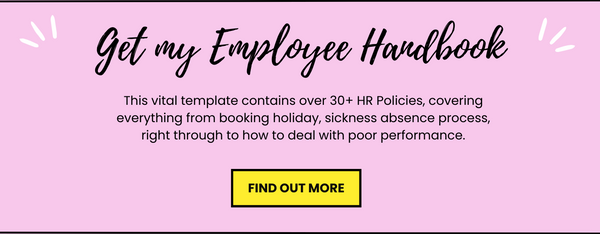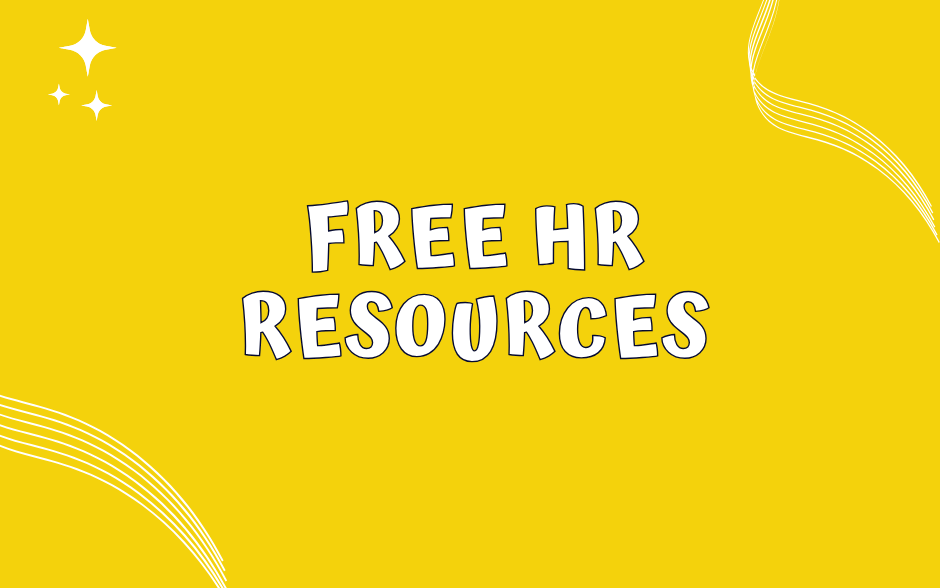Still Not Given Your Employee a Contract? Here’s Why You Need to Get it Done

If you’re procrastinating on sending your employee a contract, it’s completely understandable.
Maybe you’re a bit nervous to dabble with it yourself, if it’s not your area of expertise. 😳 Perhaps you’re worried about how your employee might react.😱 Or it could be you have been meaning to, but it’s another thing on your to-do list, that you just never get around to. 🙄
Either way, since April 2020 the law has become a lot stricter about issuing written contracts of employment. You now have to give employees a contract of employment by the end of their first day of working for you. It used to be within two months of them starting.
So there are some big risks attached to not issuing a contract of employment. Here I explain a few facts and clarify some misconceptions about employment contracts, and how you could come unstuck without a well drafted contract in place for each of your employees.
It’s a legal requirement of all employers, regardless of how few people you might employ, to issue each of them with a written contract, also known as a written statement of terms and conditions, within two months of their start date.
These are the top four risks of not having written contracts for your staff ⚠️
- An employee can make a claim to an employment tribunal if they’ve had difficulty in obtaining a written contract from their employer, and the tribunal can award a financial award to the employee.
- A disgruntled or opportunistic employee could make off with your intellectual property, or other non-IP but no less important company information, and take it with them to one of your competitors. This could include product designs, client databases, recordings, research data, secret recipes, or confidential reports. A carefully worded contractual clause can protect your business from an employee leaving and taking with them any of this valuable information.
- An ex-employee could use information and contacts they gained whilst working for you to take a slice of your clientele and profits by setting up in competition with you, or joining your competition. Ouch. By including what’s known as a restrictive covenant in your contracts, it prevents an employee from leaving and working in direct competition with you, for a certain period after their employment ends.
- More generally, a written contract provides clarity of understanding for both the employer and the employee, as to what they can expect from each other. If there is ever a misunderstanding, you will always have the contract to refer to, setting out what was initially agreed between you. There are all sorts of ways this lack of clarity can trip employers up.
What are the different types of Employment Contract? 📋
The main the types of Employment Contract are:
Permanent – where an employee is not given an end date but is employed indefinitely. This can be on a full-time or part-time basis.
💡 If you need one - grab my template here.
Fixed term / temporary – where an employee is paid and employed directly by the company (not through an agency) but for a fixed period or temporary period of time e.g. 12 months or for a specific project activity or to cover maternity / adoption leave.
💡 If you need one - grab my template here.
Zero-hours – where a worker is paid directly by the company but has no fixed weekly hours guaranteed, and they are only paid for the hours they work. The employee can turn down work that is offered and can accept work from other employers. These workers are still entitled to annual leave and national minimum wage.
💡 If you need one - grab my template here.
What should be included in a contract of employment? 📑
The legal parts of a contract are known as ‘terms’. An employer should make clear which parts of a contract are legally binding. Your Employment Contract for all employees should include details of the:
- Both parties names and addresses
- Start date (and end date if the agreement is fixed-term);
- Job title
- Place of work
- Pay details (the amount e.g. annual salary or hourly based, how often e.g. monthly and when e.g. 28th of each month);
- Hours of work/days of work (e.g. 9:00am - 5:00pm Mon-Fri);
- Holiday entitlement (including details of how it is calculated if the employee joins mid-year or when the employee leaves);
- Other benefits offered
- Notice period each party is required to give;
- Probation period (duration and conditions of probation);
- Pension
- Non-Compete Terms
- Intellectual Property (if relevant)
- Termination terms
What’s the difference between an Employment Contract and an Employee Handbook? 📘
A contract of employment is legally binding. To change the terms of a contract of employment you have to consult with employees.
An employee handbook is a set of policies which is usually non-contractual. This means they can be changed and updated more regularly without having to consult with employees. They include practical guidelines and company rules on, for example, how and when to report sickness absence, how to book holiday and family friendly entitlements etc.
You need to make employees aware of any changes to your policies and where to find them, but you don’t have to formally consult on the changes. That’s why I always recommend two separate documents – an Employment Contract with the minimum but required information and a separate Employee Handbook with all of the Company’s policies. This means should you need to change any policy, it is not subject to a consultation, as it would be if it were in the Contract, so it makes things a lot easier for small businesses. 📚
Other useful things you should know about contracts
You cannot stop employees from comparing their contracts and benefits for equal pay purposes. For example a woman and man, doing the same job, can compare contracts and benefits.
If you don’t issue an employment contract, other legal protections still start. For example, protection from discrimination on the basis of: gender, gender reassignment, marital status, pregnancy & maternity, age, race, religion, disability, sexual orientation) starts from the recruitment stage, with or without a contract. Employees also accrue annual leave, with or without a contract.
If there isn’t a contract, then the statutory minimum notice periods will automatically apply. ⏳







